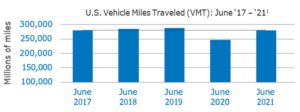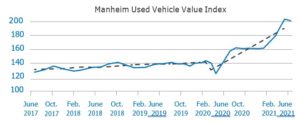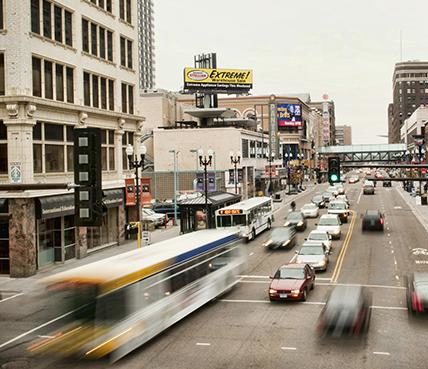Why Are Auto Insurance Rates Increasing?
The effects of the COVID-19 pandemic on the economic systems underpinning common industries like auto insurance are resulting in noticeable inflation in the economy. Inflation in auto insurance rates is due at least in part to the seven following factors:
- General inflationary pressures: With inflation hitting around 7% on consumer goods, general cost increases are affecting multiple components of car insurance, from repairs to replacement costs.
- Chip shortages: A perfect storm of industry pressures and COVID-19 disruptions have caused a shortage of the semiconductor chips needed for new vehicles.
- Low vehicle inventory: Low vehicle inventory inflates the costs of both new and used cars and truck, which in turn can impact insurance premiums. Low inventory also translates to fewer and more expensive rental cars, increasing insurance companies’ costs as they pay for customers’ rentals.
- Replacement costs: For policies that stipulate comparable replacement costs, insurance companies are paying more to buy comparable cars in this market when a car is totaled.
- Worker shortages: The auto industry is experiencing a technician shortage, right as many industries are offering higher pay to recruit and maintain staffing, potentially upping prices.
- Repair costs: Due to factors like inflation on part prices, supply chain issues and worker shortages, repair costs have increased.
- COVID-19 cleaning costs: Auto repair shops may be required to engage in COVID-19 cleaning processes. They bill insurance companies for the time and cost of this process, raising the cost of a typical repair job.
How to Reduce Your Car Insurance Rates
While you can’t control how insurers price their policies. Here are ways you can directly lower your costs.
- Compare insurance quotes: Price comparison with Insurance Brokers of MN, Inc. where they write auto insurance with over 20 top companies. Why Are Auto Insurance Rates Increasing? www.insurancebrokersmn.com
- COVID-19 cleaning costs: Auto repair shops may be required to engage in COVID-19 cleaning processes. They bill insurance companies for the time and cost of this process, raising the cost of a typical repair job.
- Reduce coverage: Review your policy and see if you have any add-ons that you could do without, such as roadside assistance. If you have an older car that may not be worth the cost of repairs, you might weigh removing collision and comprehensive coverage costs with how much you’re willing to spend on any potential repairs.
- Increase your deductible: One way to get a lower premium now is to increase your deductible.
- Use driver telematic tracking programs: Your insurance premiums are determined by the information the insurer collects to calculate the level of risk of insuring you. With more information about how you drive, the insurance company may drop your rates by up to 30% or more.
- Check for discounts: Check out your insurer’s various discounts and see where you can save.
- Improve your credit score: Your credit history may impact the price of your auto insurance if your insurance company considers your credit-based insurance score. You can check your credit report and score for free to find out where you stand and how that might impact your insurance-based credit score.
- Pay off your auto loan: If your vehicle is still financed, your lien holder may require that you hold a higher level of insurance, such as comprehensive and collision. If you’re close to the end of your loan, pay it off and consider reducing or dropping your insurance coverage to something more manageable.
Like consumer prices across many parts of the economy, auto insurance rates are rising, too. Rate increases can be difficult for consumers, but as their trusted, expert adviser you can help your clients understand what’s driving the changes as you work with them to navigate the road ahead.
Returning to “normal” (frequency)
Driving behavior changed dramatically due to COVID-19, especially at the onset of the pandemic. Fewer miles driven meant fewer accidents and, therefore, lower overall costs for auto insurers. The industry responded quickly by issuing refunds/credits to customers, lowering rates, or both.
In recent months, driving behavior has nearly returned to pre-pandemic levels—and so has the frequency of accidents. As the number of claims returns to (and then surpasses) pre- pandemic expectations, insurers’ costs follow. To pay the increasing claims, auto insurance rates must then also return to (and then surpass) where they were before the pandemic.

Vehicle miles travelled (VMT) dropped nearly 14% in June 2020 vs. June 2019. In June 2021, VMT returned to within one percent of the June 2019 level, and within two percent of where they are estimated to have been had the pandemic not affected driving behavior.
Rising repair and replacement costs (severity)
When accidents occur, auto insurers pay for the parts, labor, and other costs associated with repairing or replacing the damaged vehicles. Since the start of the pandemic, supply chain disruptions and labor shortages have driven these costs up substantially.2
The Bureau of Labor Statistics reports that average expenditures for vehicle repairs have risen more than 4% over the last year, while used car and truck prices have skyrocketed by more than 40% over the same period.3
Initially, the reduction in accidents offset the rising vehicle repair and replacement costs. That is no longer the case. Driving behavior has returned while these costs continue to escalate.

The Manheim Used Vehicle Value Index measures used vehicle prices while controlling for any shifts in underlying vehicle characteristics. The index shows a relatively steady, modest trend in prices in the years leading up to the pandemic, followed by a much steeper trend in the post-pandemic time period.4


0 Comments